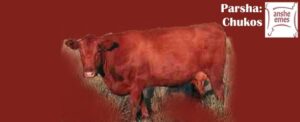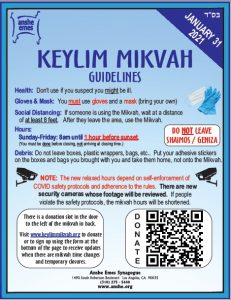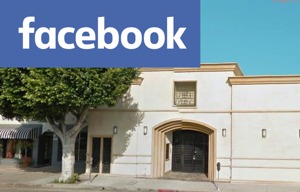Parsha Chukos
I. SUMMARY
A. “Poroh Adumah” (Red Heifer). A special purification ceremony was performed for those who had touched, or been under the same roof as, a dead body. As part of the rites, a Red Heifer (without blemish and which had not been worked) was slaughtered outside the camp and burned together with cedar wood, hyssop and a scarlet thread. The ashes were gathered, mixed with water from a running stream and sprinkled on an unclean person on the third and seventh day of impurity. At the end of the seventh day, after he washed his clothes and immersed himself in a mikveh, he could again partake in Sanctuary worship.
B. Miriam Dies; Moshe Strikes The Rock. At the beginning of the 40th year from the Exodus and after the older generation between the ages of 20-60 had died, the remainder of the populace returned to Kadesh, where Miriam died. After her death, the well of water that had miraculously accompanied the Jews ceased flowing, leading the Jews to (yet again) murmur against Moshe, this time about the lack of water. Hashem instructed Moshe and Aharon to speak to a specific rock, following which enough water would flow to satisfy the people. However, Moshe (angered by the people’s constant complaining and disrespect) impatiently struck (rather than speaking to) the rock. Because Moshe and Aharon hadn’t followed Hashem’s instructions, Hashem told them that they wouldn’t be allowed to enter Israel.
C. The Final Stages of the Journey; Aharon Dies. The people were now told to prepare for the final stage of their long journey. The only route was through Edom, whose King refused them clear passage; thus, they were forced to take a detour by way of the Southern borders of Edom. When they reached a peak in the range of Har Hahor, Aharon died and was buried. Moshe installed his son Elazar as the next Kohein Godol (High Priest).
D. The Serpents. After successfully repulsing an attack by the King of Arad, the weary Jews complained about the lack of food and water and were, consequently, punished by the deadly bite of fiery serpents. When they admitted their error, Moshe set a serpent of brass on a pole; whoever looked at it was healed.
E. The Journey Continues. The journey came to a halt at the river Arnon (the boundary between Moav and Emor). Sichon, the King of the Emorites, refused to let the Jews pass through and waged war against them; with Hashem’s help, the Emorites were soundly defeated. The Jews then overcame the resistance of Og, King of Bashan, and took possession of his country. The land on the east of the Jordan had now been conquered and the Jews encamped on the border of Moav, facing Yericho.
II. DIVREI TORAH
A. Growth Through Torah (Rabbi Zelig Pliskin)
1. Love for others necessitates sacrifices. “And the Priest is impure until the evening”. Rabbi Yizchok of Vorki said that the essence of the Red Heifer (i.e., that is, the whole procedure of purifying those who were spiritually impure) is the whole concept of “love thy neighbor”. His grandson, Rabbi Mendel of Vorki, explained that this is because the priest who was involved in the purification process himself became impure by the same process that purified the person who came to him. Giving up something yourself in order to help another is the ultimate love for one’s fellow man. When one truly loves another, one feels pleasure in all the sacrifices made for him/her.
2. The Almighty causes suffering for our benefit. “And the Almighty said to Moshe, “make for yourself the image of a snake and place it on a pole. And it will be that everyone who was bitten shall see it and will live”. Commentators note the snakes bit the people and the image of the snake was the cure. Rabbi Chaim Shmuelevitz explains that when Hashem causes a person to suffer, it comes from His compassion and love. In the overall scheme of things we gain from suffering — it is either atonement, teaches us to improve and/or elevates us. Thus, the smiting and cure can both be from the same thing because they both come from the attribute of love. While being smitten hurts regardless of the motivation of the one who smites you, it is much easier to cope with when you know that it is ultimately beneficial for you and comes with love.
B. Love Thy Neighbor (Rabbi Zelig Pliskin)
We are obligated to pursue peace. “And Israel sent messengers to Sichon, King of the Emorites . . . ” Many obligations in the Torah only apply when the opportunity presents itself (e.g., “if you meet the ox of your enemy . . . “), but which we are not required to actively pursue. However, we are obligated to pursue peace. (As Tehillim states “Seek peace and pursue it”.)
C. Kol Dodi on the Torah (Rabbi David Feinstein)
The Red Heifer As A Metaphor for Torah. The Red Heifer is, the Torah says, “the decree of the Torah”. Why is it singled out? Because it is a metaphor for Torah — just as a mixture from the Red Heifer had the power to cleanse someone who was in ritual impurity, so too does the Torah has the power to cleanse someone who is in spiritual impurity and to transform him/her into a pure and sincere person.
D. The Chassidic Dimension /In the Garden of the Torah (the Lubavitcher Rebbe, Rabbi Menachem M. Schneerson, z’tl)
1. Red Heifer As The Foundation of the Torah. The commandments in the Torah are divided into 3 general categories: (a) eidos – commandments which recall and/or testify to past significant events (e.g., Shabbos, the Holidays, etc.); (b) mishpatim – commandments which are also dictated by mortal understanding (e.g., not stealing, not killing, giving charity, etc.); and (c) chukim – commandments which have no rational explanation. Of the chukim, the Red Heifer is the most puzzling (even Solomon couldn’t comprehend its meaning). The fact that this is “the” decree of the Torah indicates that it is the foundation for the entire Torah. To an extent, even eidos and mishpatim are “chukim” in that they are essentially expressions of Hashem’s Will and thus transcend logic. However, with chukim, the Divine Will underlying these commandments is completely illusive. The same is true of Torah — even matters which are comprehensible by human intelligence are, in fact, supra rational. This heightens our sensitivity to the Torah’s inner G-dly core, and is basic to one’s spiritual service of Torah and mitzvos, for one should be motivated by kaballas ol (the acceptance of the Heavenly yoke); if all mitzvos were comprehensible, it would be impossible to reach this level of mesiros nefesh (total self-sacrifice for Hashem).
2. Defying Rationality. The Hebrew word “chukas” is related to the word “to engrave”. What is the connection? A Jew instinctively desires to perform G-d’s will (as the Zohar teaches, “a Jew neither desires nor is able to be separated from G-dliness”). This desire emanates from the Jewish soul, which transcends intellect, and most often finds expression in the chukim which don’t carry with them the “excess baggage” of logic; therefore, their performance reveals the soul’s essence. The superiority of chukim over eidos and mishpothim is similar to the similarity of engraving over writing — with writing, the ink and letters remain a separate entity from, and conceal, the paper upon which they are written; with engraving, the letters are composed of the very substance upon which they are engraved, and therefore do not conceal it. Like engraved letters, there is nothing in chukim to obscure G-d’s will and desire.
E. Peninim on the Torah (Rabbi A.L. Scheinbaum)
Aharon’s inner garments. “And Moshe undressed Aharon of his garments, and put them upon Elazar, his son”. Our Sages note the uniqueness of this statement — normally, Aharon would have had to remove all of his garments, so that Elazar could don his undergarments first. As Aharon removed his outer garment, however, Elazar immediately put it on; this became Elazar’s undergarment. Aharon’s undergarments became, in turn, Elazar’s outer garments. There is a profound lesson is this: Aharon’s “inner” garments or essence — the way he acted in the privacy of his home — was reflected externally by his children. Children invariably reveal the actual values and outlook presented in their homes. No matter how impressive an external facade of piety one may try to build, one’s children see and inherit the parent’s inner essence and commitment to Yiddishkeit.
F. Lil’Mode U’lilamed (Rabbi Mordechai Katz)
Appreciating Greatness In Our Midst. In addition to being the sister of Moshe and Aharon and a great prophetess in her own right, Miriam was responsible for convincing her father Amram to get back together with his wife (i.e., when Pharaoh decreed that all Jewish male babies were to be thrown into the Nile, many husbands separated from their wives and refused to father any additional children), without which Moshe would not have born. Miriam’s greatness was also responsible for the well of water which miraculously traveled with the Jews in the desert. With respect to Aharon, among other characteristics and accomplishments, Aharon considered it his personal mission to settle quarrels and foster peace. The Jewish people didn’t fully realize Miriam’s and Aharon’s greatness until their deaths; we, too, often to appreciate great people in our midst during their lifetime.
G. Living Each Week (Rabbi Abraham Twerski)
1. The Delusion of Perfection. ” . . . that has no defect and upon whom no yoke was placed.” The Talmud refers to the acceptance of Torah and mitzvos as “the yoke of the rule of Heaven.” The metaphor of the yoke is used since just as an ox who is harnessed to a yoke does not deviate from the path designated by the driver, similarly the Jew should consider himself “harnessed” by the dictates of the Torah. Based upon this term, the Seer of Lublin commented on the above verse: “if one thinks himself to be without defect, it is because he hasn’t accepted the yoke of the rule of Heaven.” A person who feels bound by Torah will constantly strive to improve his character and in this process will always find within himself defects which require correction. Considering oneself perfect is incompatible with being subject to the rule of Torah.
2. A loss of self-control. Rambam states that Moshe’s sin for which he was punished and not allowed to enter Israel was that he lost his composure and hurled an epithet at the Israelites (calling them “deficient”). Although Moshe used an identical term previously in the Torah, that was not said in anger but as part of a particular admonition. It was not the particular words that were wrong, but the fact that he said them in anger. Clearly, Moshe was held to a higher standard of behavior than anyone else. Yet, from this incident, we can infer the gravity of losing one’s composure and this principle applies to each of us. Anger is a normal human reaction, and is it now “sinful” per se. Expressing anger in actions, however, is another matter. Here, the Torah draws some definite lines. (For example, the Torah teaches us “do not seek revenge and do not bear a grudge.”) Rambam teaches that this incident shows us that we must never let anger turn into rage that deprives us of self-control.
H. Reflections on the Sedra (Rabbi Zalmen Posner)
The lesson of Chukos. Among the lessons of chukos (decrees which are beyond our understanding — e.g., kashrus, shatnes, the red heifer, etc.) is that a test of the impact of Torah on an individual may be gauged by his willingness to recognize the limitations that bound his understanding and his acceptance of the aspects of Torah that transcend his experience.
I. Reb Michel’s Shmuessen (Rabbi Michel Barenbaum)
Doing for others. The laws of the Red Heifer are among the most mysterious in the entire Torah (in fact, King Solomon remarked, “I have said I am wise,’ but this matter remains distant from me”). The whole procedure was performed in order to release someone from a state of ritual impurity, yet everyone involved in performing the procedure themselves became impure. Although the explanation of how this process worked is beyond human understanding, all of the words of the Torah are intended to teach us a lesson. There is a principle in halacha (Jewish law) that “every person of Israel is responsible for the other.” There is another rule that one person cannot perform a mitzvah (e.g., blowing the shofar) if he is himself not obligated to perform that mitzvah. For example, a minor cannot blow a shofar for a fellow Jew. However, because of the first principle — that of mutual responsibility (“arvus”) — Jewish law allows one to perform a mitzvah on behalf of someone else even if the first person has already performed the mitzvah. For example, an adult Jew who has heard the shofar on Rosh Hashonah may blow it for another who hasn’t yet heard shofar. The principle of arvus dictates that as long as there is a fellow Jew somewhere in the world who has not fulfilled his obligation to perform the mitzvah, every other Jew — even someone who has performed that mitzvah — is still considered to be in a state of “obligation” for that mitzvah. The section of porah adamah teaches us a further application of the concept of arvus — as noted above, the Koheinim who performed the process themselves became impure as a result thereof. The Koheinim couldn’t absolve themselves of the obligation on the ground that they didn’t want to become impure themselves. This lesson is a very practical one in our daily lives and a powerful reminder of our obligation to reach out to our fellow Jews, to show them the beauty and depth of Torah and to assist them with all of their material and spiritual needs.
J. Living Each Day (Rabbi Abraham Twerski)
Absolute obedience. The saga of Korach is followed by the mitzvah of the porah adamah. The mitzvah of porah adamah represents the suspension of logic in deference to the Divine Will. This attitude is not restricted to this mitzvah. Scripture introduces the mitzvah of the porah adamah with the words “this is the law of the Torah.” Surrendering one’s own reasoning and accepting the superior reasoning of Hashem is the law of the entire Torah and must embrace all of Judaism. Today, there are those who reject those Torah observances which they regard are “illogical” or “outdated”. The mitzvah of porah adamah — which was vouchsafed only to Moshe — teaches us that our understanding of Torah is directly proportional to our willingness to relinquish our personal drives in deference to Hashem’s Will. To the extent that we let go of our own will, we can understand the Divine Will. Our ancestors at Sinai understood this ideal when they proclaimed, “we will do and then we will understand.” Torah is not beyond our understanding, but we must be willing to make the sacrifices that true Torah understanding demands.
K. Thoughts on the Parsha (Rabbi Yehoshua Bertram)
Death as a Chok. Why the juxtaposition between the porah adamah and the death of Miriam? Just like the porah adamah, death can be viewed as a chok. In fact, the hardest thing to understand in life is death. The Talmud teaches that there were two sages, Raba and Rav Chisda. Both of them were Tzaddikim. One lived until the age of 92, was wealthy and lived to see 60 weddings of his offspring; the other lived until the age of 40, was poor and saw the funerals of 60 members of his family. Why? Only Hashem knows. It is up to us to have the faith in Him.
NEXT PARSHA: BALAK





 Visit the group and request to join.
Visit the group and request to join.
